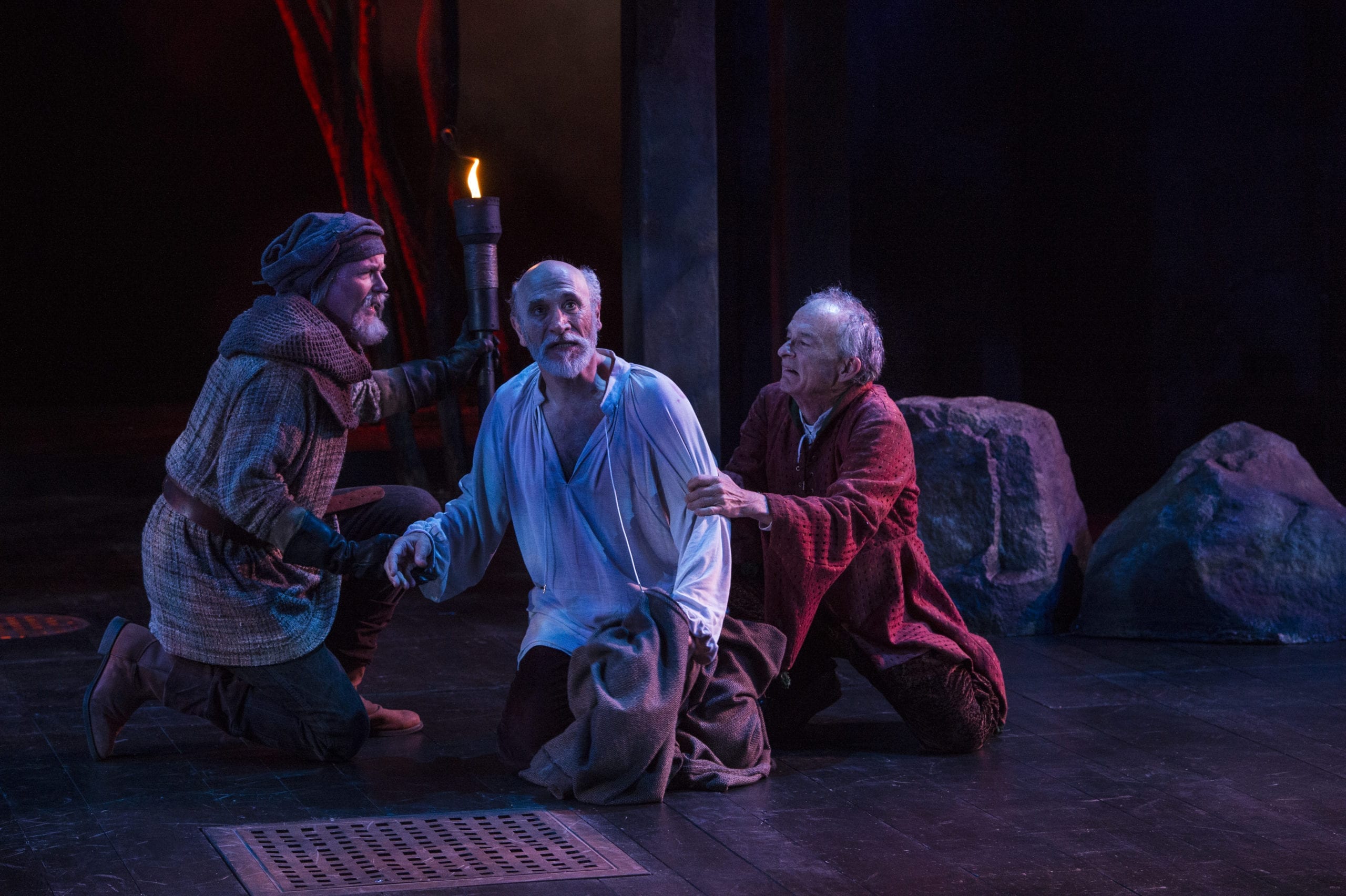CEDAR CITY — In King Lear, the natural order of the world is being destroyed. Families disintegrate. Loyalty becomes dangerous. And cruelty becomes an asset, necessary for survival.

In the first scene of this play, King Lear asks his daughters—Goneril, Regan, and Cordelia—to proclaim their love for him as he divides his kingdom. When Cordelia cannot put her love into words, the obsequious declarations from the other two sisters lead Lear to banish Cordelia without any inheritance and give half of his realm to Goneril and Regan. This inciting event puts the rest of the play into motion, with tragic consequences for almost every named character in the play.
The fundamental problem with King Lear is that, unlike Shakespeare‘s other tragic plays, the title character’s downfall is entirely his fault. Although his daughters are grown, Lear is a terrible judge of their character. Merely because Cordelia is unable to express the depths of her love for him, he arrives at the rash conclusion that she must not love him at all. Likewise, Goneril and Regan’s greediness and lack of concern for family are dominant traits for the older two daughters, but Lear seems oblivious to this fact. If Lear had never met these women, then his poor judgment would be excusable. But they are his daughters, and I find it inconceivable that Lear would not have a better understanding of his own children. All of Shakespeare’s other protagonists in his tragedies are compelling because of a combination of their choices and their circumstances. But Lear cannot blame a deceiving confidant, an overbearing and ambitious wife, or his social environment for any part of his tragedy. This makes it difficult to sympathize with Lear or enjoy the tragedy on par with the others in the Shakespeare cannon.

That being said, it is the responsibility of the director to overcome any weaknesses in a script. Unfortunately, Sharon Ott did not make Lear anything other than “old and foolish” (as he says at the end of Act IV). Ott depended on the general unpleasantness of his situation to make him sympathetic. No one would want to go mad, or be rejected by family, or penniless. But merely being in bad situations is not enough to create genuine pathos for a character—especially if he is the cause of his own misfortune. In other words, Lear is interesting and sympathetic as a general symbol of the negative aspects of aging, but not as a unique human being.

This isn’t to say that Tony Amendola‘s performance in the title role is problematic. His technique is flawless, and the way he rages at the storm in the third act shows why the scene is so famous. Amendola was excellent in showing Lear’s temper, which clearly showed why he would rage at a storm or place a curse upon Goneril (Melinda Pfundstein). Yet, Amendola showed a tender side to Lear in such scenes as his reunion with Cordelia (Kelly Rogers), and Lear’s disappointment in his daughter’s rejection of him. Amendola made Lear a used-up, wasted old man, who was frustrated at the world’s treatment of him once he had given up his power. It was a portrayal that fits the script, but was not useful in making Lear more than a symbol of how society often treats the elderly.
The closest character to a real, fully developed human being was Edmund, the illegitimate son of the Earl of Gloucester. Played by Brendan Marshall-Rashid, Edmund was a bastard in both senses of the word, as he schemed, double-crossed, and lied to get what he wanted. The smarmy way that Edmund manipulated the Duke of Cornwall (Christopher R Ellis), his brother (Edgar, played by Tyler Pierce), or the two royal sisters was both fascinating and repulsive at the same time. A single smile, or a word of feigned devotion would be enough for this calculating psychopath to exploit the other people’s trust. His morally repugnant actions fit in well with the nihilistic mood of the play, and I applaud Marshall-Rashid’s ability to create such an interesting character.
The other cast members had moments of strength, though none could overcome the flatness of their characters. Despite the best efforts of Pfundstein (as Goneril) and Saren Nofs-Snyder (as Regan), the two older sisters were often so similar that the lines of one sister could be given to the other without any substantive change in the play. Drew Shirley had the misfortune of playing the role of Oswald (Goneril’s steward), whose most defining character trait was a crippled arm—a directorial choice that seemed to exist solely to explain why Oswald loses every fight he gets in. As the most memorable supporting character, James Newcomb was suitable as the Earl of Gloucester; his screams of pain as he is tortured were chilling, but there seemed to be little connection or actual affection for either of Gloucester’s two sons.
The visual elements of the play reflected the sadness of the story, with the dead tree up stage and drab stage colors in Vicki M. Smith‘s set design being an ideal choice. Rachel Laritz‘s costume design put most of the characters in heavier clothes that would be appropriate for autumn, implying a season of decay and death that matched the depressing mood of Shakespeare’s script.
In short, there were pieces of this production of King Lear that are commendable. The play is worth seeing as part of the Utah Shakespeare Festival’s Complete the Cannon initiative, where they produce every Shakespeare play over the course of several years. But the positive aspects of the production never combined to reach the greatness that is so often seen in the work of Shakespeare.
[box type=”shadow”]The Utah Shakespeare Festival production of King Lear plays various dates at either 2 PM or 8 PM at the Adams Shakespearean Theatre on the campus of Southern Utah University through September 4. Tickets are $32-73. For more information, visit www.bard.org.[/box]
